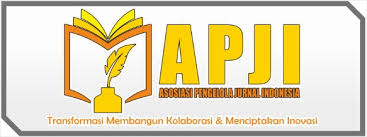Community Empowerment Through Biomass Wass Management: A Case Study of Kang Ebit Programme
DOI:
https://doi.org/10.70610/iare.v3i2.923Keywords:
Biomass Waste, Briquettes, Carbon Emissions, Palm SugarAbstract
The increasing volume of seasonal biomass waste such as siwalan (lontar palm) peels and coconut shells in Kapu Village, Merakurak Sub-district, Tuban Regency, has led to significant environmental and social challenges. This waste is often underutilized and typically burned in the open, causing air pollution and contributing to carbon emissions estimated at ±6–8 tons of CO₂ per year. Meanwhile, the majority of the village’s working-age population depends on seasonal agriculture, with limited alternative economic opportunities especially for vulnerable groups such as the elderly, housewives, persons with disabilities, and the unemployed. This community engagement program introduced briquette production from siwalan peels and coconut shells through a participatory approach, simple technology transfer, and entrepreneurship mentoring. The initiative resulted in increased community skills in briquette production and the emergence of local entrepreneurial efforts. Furthermore, it helped reduce open burning practices and created new income sources for vulnerable groups. The program demonstrates that biomass waste utilization can not only benefit the environment but also promote inclusive economic empowerment in rural communities.
References
Afandi, M. (2020). Participatory action research sebagai pendekatan dalam pemberdayaan masyarakat. Jurnal Pengabdian kepada Masyarakat, 2(1), 12–19.
Elkington, J. (2020). Green swans: The coming boom in regenerative capitalism. Fast Company Press.
Ife, J. (2016). Community development in an uncertain world: Vision, analysis and practice. Cambridge University Press.
Laverack, G. (2006). Improving health outcomes through community empowerment: a review of the literature. Journal of Health, Population and Nutrition, 24(1), 113–120.
Lestari, D., Wahyuni, R., & Nugroho, A. (2022). Pelatihan produksi briket dari limbah pertanian sebagai upaya pemberdayaan masyarakat. Jurnal Pengabdian Masyarakat AgroTechno, 5(2), 67–74.
Neuman, W. L. (2014). Social Research Methods: Qualitative and Quantitative Approaches. In Teaching Sociology (Vol. 30, Issue 3). https://doi.org/10.2307/3211488
Nussbaum, M., & Sen, A. (Eds.). (2010). The Idea of Justice. Harvard University Press.
Nuraini, T., & Sugiharto, B. (2020). Pemberdayaan kelompok rentan melalui wirausaha lokal di wilayah agraris. Jurnal Ekonomi dan Pembangunan Daerah, 7(1), 45–58.
Putri, S., Hidayat, A., & Ramadhani, N. (2021). Dampak pembakaran terbuka limbah biomassa terhadap emisi karbon di desa pertanian. Jurnal Lingkungan dan Energi, 9(3), 210–219.
Rahmawati, L. (2023). Dampak sosial ekonomi pelatihan briket tempurung kelapa terhadap pendapatan rumah tangga. Jurnal Sosial dan Inovasi Teknologi, 4(1), 32–41.
Rubin, A., & Babbie, E. R. (2011). Research Methods for Social Workers. In Research Methods for Social Workers (Seventh Ed). Thomson Brooks/Cole. https://doi.org/10.1057/978-1-137-44283-3
Saleh, M. (2017). Metode penelitian kualitatif dalam pengabdian masyarakat. Surabaya: Pena Nusantara.
Downloads
Published
How to Cite
Issue
Section
License
Copyright (c) 2025 Sukmayadevi Sukmayadevi, Lingga Gayuh Kinara, Hasfin Bagus Trianto, Shinta Tris

This work is licensed under a Creative Commons Attribution-ShareAlike 4.0 International License.
License: CC BY-SA 4.0 (Creative Commons Attribution-ShareAlike 4.0 International License)





 MoU
MoU 


